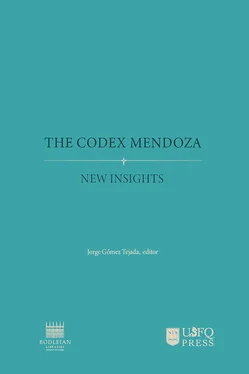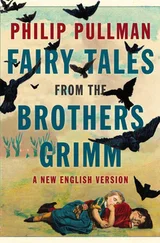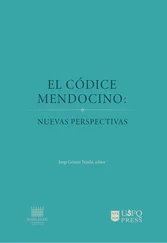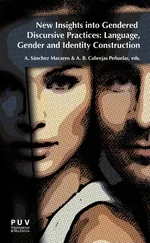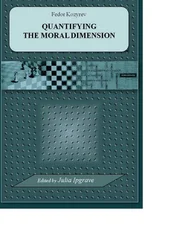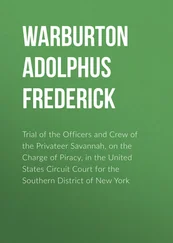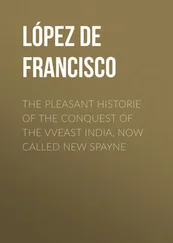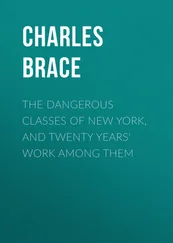In its present form, the Codex Mendoza has no preface. Additionally, Hakluyt could not have acquired the manuscript after Thevet’s death, since he returned to England in 1588 and the Frenchman died in 1592; such speculations prevent us from giving credence to Purchas’s claims.12 Likewise, in referring to the manuscript as “the choisiest of my Jewels” and by turning it into a present from the viceroy to the emperor—even if no evidence, either within the manuscript, or without it in the form of any previous reference made by Hakluyt or Thevet—Purchas elevates the value of the manuscript as a source of information. Likewise, it is untrue that Mendoza “with some difficultie obtained … the book from the Indians” (Pennington 1997, sec. introduction). By means of a careful analysis of the manufacturing process of the manuscript, I have shown that the Codex Mendoza was the result of a collaborative process between Mexican artists and a (possibly Spanish) interpreter (Gómez Tejada 2012, chap. 1; chap. 5 of this volume). Moreover, the narrative priorities of the manuscript show us that, beyond it being an exotic curiosity or a purely informative document, the artists who collaborated in making the Codex Mendoza conceived of it as a politically charged and ideologically important document. By means of carefully composed pictures and texts, it demonstrated the just and civilized nature of the Mexica world (Gómez Tejada 2018). Notably, both the chronological and geographical separation between Thevet and Purchas and the fact that it was only after Hakluyt’s death that Purchas acquired his documents—among which was the Codex Mendoza—cast further doubt upon Purchas’s narrative.
That being said, it is necessary to mention the value a manuscript such as the Codex Mendoza had for Purchas’s corpus, who devoted himself to popularize the exploration narrative genre for what is nowadays known as “armchair travelers.” A prolific writer and a successful proponent of the colonization of the Americas, Purchas has been characterized in two main ways. Several scholars with a historicist inclination have deemed him to be an irresponsible and careless writer, prone to rely on literary license to embellish his narratives when convenient in order to enhance specific elements of them (Pennington 1997, sec. Introduction). As a counterpoint, authors such as James Helfers (1997, 160–86) have pointed to the fact that, for Purchas, as the titles of his works suggest, exploration was a religious, rather than a secular, activity. In other words, in the act of exploring, an individual set out on a pilgrimage and, in doing so, unveiled the work of God. Discovery by means of exploration was synonymous with becoming acquainted with God. It is precisely in these terms that Purchas (1625, xxxix) talks about his Pilgrimes,
Naturall things are the more proper Object [of this work], namely the ordinary Workes of God in the Creatures, preserving and disposing by Providence that which his Goodnesse and Power had created, and dispersed in the divers parts of the World, as so many members of this great Bodie.
In this context, the narrative of discovery need not be restricted by what is factual, but it instead strives towards the visualization of transcendence. From the perspective of Protestantism, this narrative becomes a metaphor for personal growth rather than a travel-guide for a physical journey. Purchas’s editorial comments (often used to instigate an emotional response on the part of the reader) were not necessarily grounded in real events. The presentation of the Codex Mendoza in Purchas’s work, then, calls for a certain degree of skepticism when it comes to dating the manuscript and establishing its itinerary. However, this in no way diminishes the text’s usefulness to understand Purchas’s priorities as an author.
The second hypothesis that might explain how Thevet came to be in possession of the Codex Mendoza is found only in the testimony of a lone French geographer, penned in 1588 in an unpublished manuscript titled Grande Insulaire et Pilotage. Published and translated into English for the first time in 1986 by Schlessinger and Stabler, the Grande Insulaire was used for the first time as a source of information for the Codex Mendoza’s trajectory by H. B. Nicholson in 1992,
two books about the idols writ by hand containing the genealogy and history of the kings and great lords of that country, and the pictures of the idols they adored, painted and pictured in two books, written by hand by a monk who lived there around thirty-four years, excercising the charge of bishop of that country … these books came into my hands after having been presented to the late Queen of Spain, daughter of King Henry II of France … The reader who might be curious and wants to go thoroughly into the matter will have patience, if it please him, to wait until I have published these books, which will be soon with God’s help. Still, if he were too famished [to wait], I would advise him to come see me and I will show him something that will be able to satisfy him. (Thevet cited in Schlesinger and Stabler 1986, 218–19).
Based on the contents to which this passage refers—which include the genealogy and history of the lords of Mexico, painted and written by a monk, and which notably resemble those of the first part of the Codex Mendoza—it appears the passage offers a first reference to the manuscript by Thevet’s hand, even if indirect, to the Codex Mendoza. Nevertheless, the possibility that the manuscript had ended up in France by way of Queen Elizabeth of Valois leaves many questions unanswered. If one accepts that Thevet in fact acquired the manuscript in 1553, then it reached Thevet six years before the queen married Philip the II and even before he became king. If, on the contrary, one takes the passage from the Grande Insulaire as a reference to the Codex Mendoza based on accurate reminiscences, then the 1553 date becomes problematic. The solution to these problems might lie within Thevet’s own library.
Purchas was not the only geographer of the time who manipulated facts in order to prompt an emotional response on the part of his audience, or that handled his sources in a way that would help him compose an enticing narrative arc. Both during his lifetime and after, Thevet has been criticized for what at first glance could be deemed slapdash work as compiler and narrator.13 The date Thevet stamped on the manuscript is not necessarily the same date it came into his possession. Frank Lestringant has convincingly proven that Thevet’s memories, references, and even his biographical annotations should not be taken at face value. In his biography of Thevet, Lestringant has explored the visible imprecision and even the outright fabrication of facts that plague the Frenchman’s oeuvre. In fact, Lestringant (1991, 40–43) has identified a process he labeled “retroactive autobiographical fiction” by means of which Thevet manipulated both facts and dates such that his narratives would fit those of other published sources or commemorate events in his life that were relevant to any particular work. Thus, Thevet signed and dated a copy of Sebastián Münster’s Universal Cosmography on the title page as 1562, even when on the very same page we can read that it had been published in 1565. Later, on page 1337, Thevet once again dates the book, this time as 1558 (Lestringant 1991, 40).
In the case of the Codex Mendoza, its dating seems to group it with other manuscripts connected by Thevet’s interest in the New World: Jean Alfonse’s Les Voyages Aventureus, first published in 1558, and Antonio Pigafetta’s Le voyage & navigation, faict par les Espalgnolz, published in 1537 (Lestringant 1991, 42–43). Thevet assigned all of these a 1553 date, thus grouping them together. Additionally, even though the latter’s publication date was earlier than this, the dating of Alphonse’s book to one earlier than its own publication recalls what Thevet had done with Münster’s book.
Читать дальше
